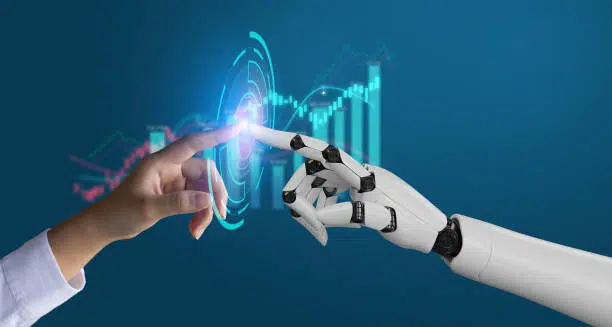In our increasing world, the importance of translation cannot be overstated. As businesses and individuals connect across borders, the translation industry adapts to new challenges and opportunities. We will explore the trends in translation industry, emphasising its constant evolution. We will delve into key emerging trends that are poised to shape the translation in 2023.
The Advances in Generative AI and Machine Translations
The translation landscape is undergoing a significant transformation with the rapid advancements in AI and Machine Translation (MT). While MT has made impressive strides, it is essential to be aware of its limitations.
The Evolution of Machine Translation:
Machine Translation (MT) has evolved considerably over the years, moving beyond rule-based systems to statistical models and, more recently, neural networks. The advent of deep learning and neural machine translation (NMT) has marked a paradigm shift in the accuracy and fluency of automated translations. This progress has been accelerated by the availability of vast amounts of parallel data and powerful computational resources.
Advancements in AI and Natural Language Processing (NLP):
The rise of AI has not only impacted the field of MT but has also played a pivotal role in enhancing Natural Language Processing (NLP). NLP technologies enable machines to understand, interpret, and generate human-like text, contributing to the refinement of translation systems.
The Impact on the Translation Industry:
The integration of Artificial Intelligence (AI) and Machine Translation (MT) into the translation industry has indeed brought about significant changes and improvements. Here are some key impacts:
Increased Efficiency and Speed:
- AI and MT technologies have dramatically increased the speed at which translations can be generated. Large volumes of text can be processed in a fraction of the time it would take a human translator.
- This acceleration is particularly beneficial for time-sensitive content, such as news updates or social media posts, where quick turnaround times are crucial.
Cost Savings:
- The automation of translation processes through AI and MT can lead to cost savings for businesses. The efficiency gains mean that less human labor is required for routine and high-volume translation tasks.
- This cost-effectiveness allows companies to allocate resources more strategically and invest in higher-value translation services for complex or specialised content.
Consistency in Translation:
- AI-powered translation tools contribute to maintaining consistency in translated content. They can adhere to specific terminology, style, and tone consistently across large volumes of text, reducing the risk of inconsistencies that may arise with multiple human translators.
Improved Productivity for Translators:
- Rather than replacing human translators, AI and MT technologies are often used as tools to assist them. This allows human translators to focus on more creative, nuanced, or context-dependent aspects of the translation process.
- Translators can use AI-powered tools to increase their productivity, making their work more efficient without sacrificing quality.
Handling Multilingual Content at Scale:
- AI and MT are particularly effective when dealing with large-scale translation projects involving multiple languages. They can handle the complexities of translating content into numerous languages simultaneously, providing a scalable solution for global businesses.
Ongoing Evolution and Improvement:
- Continuous advancements in machine learning and natural language processing contribute to the refinement of translation models, improving accuracy and expanding language coverage over time.
Challenges and Considerations:
- While the benefits are evident, challenges remain, including the potential for errors in nuanced or highly specialized content. Human oversight and editing are often necessary to ensure the highest quality translations.
- Ethical considerations, such as ensuring privacy and handling sensitive information, are also important factors that need to be addressed in the use of AI and MT in translation.
In summary, the integration of AI and MT into the translation industry has brought about a transformation in terms of speed, efficiency, and cost-effectiveness, while also posing challenges that require careful consideration and ongoing adaptation.
Challenges and Limitations: Trends in Translation
Despite the advancements, MT systems face challenges. It may struggle with idiomatic expressions, cultural nuances, and context-specific understanding. Literal translations can lead to inaccuracies or loss of meaning. Additionally, certain domains, like legal or medical translations, demand a high degree of precision and expertise, which machines may not fully capture.
Localisation Beyond Words
Translation is no longer confined to words; it encompasses cultural adaptation. Beyond mere linguistic translation, there is a growing demand for transcreation, where marketing materials and websites are not just translated but tailored to resonate with local cultures.
Here are key aspects of localisation beyond words:
1. Transcreation: Bridging Cultures with Marketing Copy
Creativity in Adaptation: Transcreation involves adapting the content while maintaining its essence. This often requires a deep understanding of local customs, values, and humor to ensure the message is not lost in translation.
Emotional Resonance: Transcreated content aims to evoke similar emotions in the target audience as the original content. This might involve changing visuals, slogans, or even the overall tone to align with cultural sensibilities.
2. Cultural Sensitivity: Avoiding Pitfalls
Understanding Taboos: Successful localisation requires an understanding of cultural taboos and sensitivities. Avoiding inadvertent cultural missteps is crucial to maintaining a positive brand image.
Symbolism and Imagery: Icons, colors, and symbols can carry different meanings across cultures. Adapting these elements ensures that they align with local perceptions.
3. Glocalisation: Balancing Global Consistency and Local Relevance
Definition: Glocalisation is the fusion of “global” and “local.” It involves adapting global products or services to local markets while maintaining a consistent global brand image.
Customising Offerings: Glocalisation goes beyond language and extends to product or service customisation based on local preferences and needs. This helps in creating a more personalised and relevant experience for users in different regions.
Global Branding with Local Flair: Glocalisation involves incorporating elements of local culture into global branding strategies. This could mean featuring local influencers, using region-specific imagery, or incorporating local trends.
4. User Experience Localisation: Beyond Content
Design and Interface: Adapting user interfaces, layouts, and design elements to align with cultural preferences enhances user experience. This includes considerations for color schemes, navigation patterns, and overall aesthetics.
Local Regulations: Adhering to local laws and regulations is crucial. This includes privacy policies, legal disclaimers, and any other content that may be subject to regional variations.
5. Technology and Localisation
AI and Machine Learning: Leveraging AI and machine learning for localisation tasks can streamline the process. Automated tools can analyze cultural nuances, helping in more accurate transcreation and glocalisation efforts.
Data Privacy: Ensuring compliance with data privacy laws specific to each region is essential. This includes handling user data by local regulations.
The landscape of localisation has expanded to encompass a holistic approach that goes beyond words. Successful global brands recognize the importance of cultural adaptation, transcreation, and glocalisation to establish a meaningful connection with diverse audiences worldwide.
The Human Touch Remains Essential
In the era of automation and artificial intelligence, the irreplaceable role of human translators is underscored by the distinct qualities they bring to the translation process. While technology has made significant strides in automating certain aspects of translation, there are nuances and complexities that only a human touch can address effectively.
Human Touch in Translation:
Cultural Sensitivity: Human translators understand the cultural nuances embedded in language, ensuring accurate and contextually appropriate translations.
Contextual Understanding: Beyond literal translation, human translators grasp the broader context, preserving the intended meaning of messages.
Soft Skills in Translation:
Critical Thinking: Human translators analyse language critically, unraveling meanings and implications within the context.
Problem-Solving: Faced with ambiguity or context-dependent language, human translators make informed decisions to maintain accuracy.
Cross-Cultural Communication:
Cultural Awareness: Human translators navigate idiosyncrasies, idioms, and colloquialisms, ensuring translations resonate culturally.
Social and Historical Understanding: Knowledge of cultural norms and historical references enhances the accuracy and appropriateness of translations.
Writing and Editing Skills:
Polishing Content: Human translators contribute writing and editing skills, refining text for clarity, coherence, and adherence to desired tones.
Finesse in Creative and Nuanced Content: Particularly crucial in industries like marketing, legal, and healthcare where nuanced communication is vital.
Enduring Importance:
Holistic Skill Set: The human element in translation encompasses linguistic competence, empathy, intuition, and the ability to bridge cultural gaps.
Indispensability in Globalised Industries: As industries globalise, the value of human translators remains crucial despite advancements in automation and AI.
Conclusion
The translation industry is undergoing a paradigm shift driven by technological advancements, cultural considerations, specialisation, and the undeniable importance of the human touch. As we navigate the evolving landscape of translation in 2023, it becomes clear that a combination of technological innovation and human expertise is key to meeting the diverse needs of a globalised world.
Addressing the challenges and opportunities presented by these emerging trends in translation requires staying informed and adapting to the evolving landscape. Whether you are a language service provider, a business expanding globally, or an individual seeking accurate and culturally sensitive translations, embracing these trends will be essential.
Join us in navigating the future of translation. Stay ahead by incorporating these trends into your approach. Visit our professional translation service for more insights and solutions tailored to your translation needs. The world is speaking – be ready to understand.
Contact us today to explore how our translation services can elevate your global communication strategy.
Related Posts

Get a quote today
"*" indicates required fields
Subscribe today to receive the latest insights and updates from Sylaba Translations









